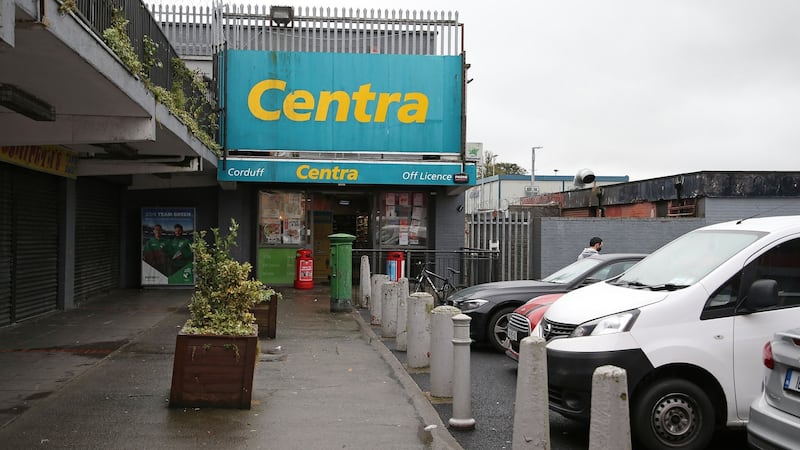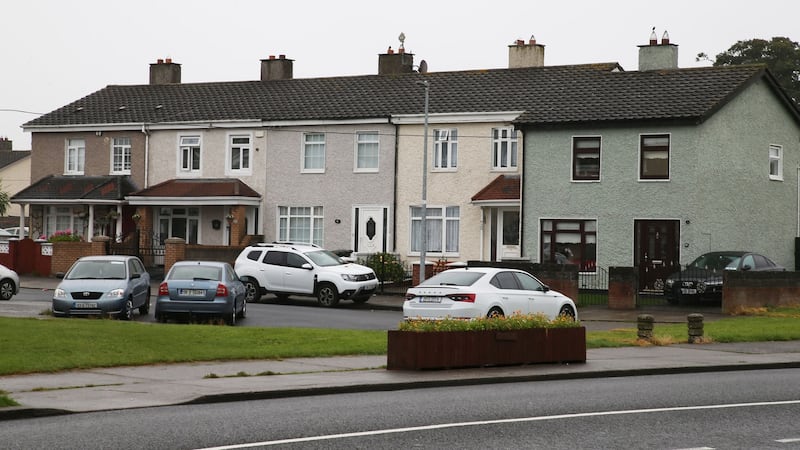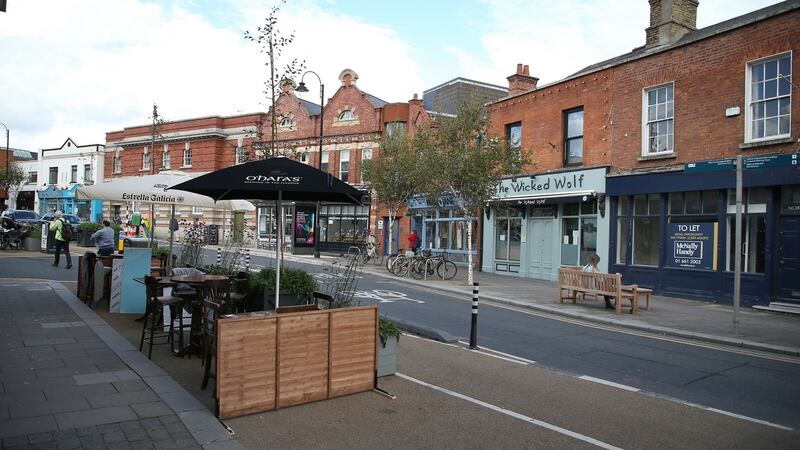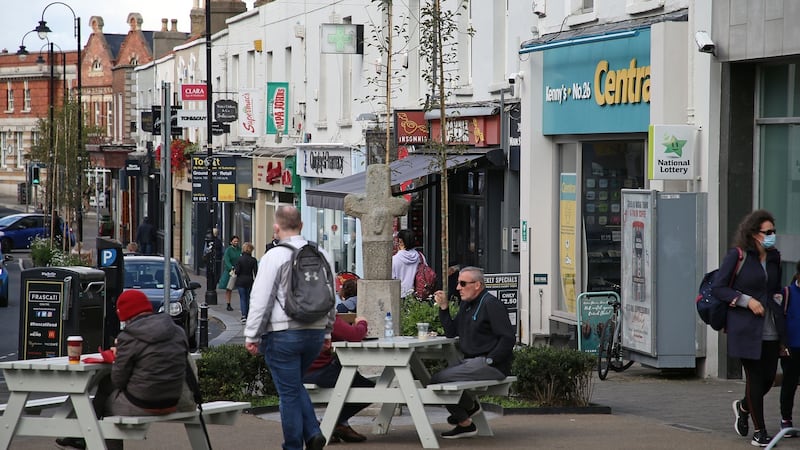Covid-19 rates have increased across Dublin but there’s a disparity in the incidence between areas, according to data published this month on Ireland’s Covid-19 Data Hub.
The data shows a “14-day incidence rate” of Covid-19 per 100,000 people by local electoral area. September 14th data showed Blanchardstown-Mulhuddart, in the northwest of the city and with a population of 35,307, had the highest rate at 190 cases per 100,000 people. The rate there has now fallen to 128 per 100,000, but it remains worryingly high.
Blackrock, in the southeast of the city and with a population of 33,727, still has the lowest level in Dublin, at 47 cases per 100,000 people.
BLANCHARDSTOWN-MULHUDDART
This large area, intersected by the M50, M2 and M3, is very diverse, a mixture of retail (Blanchardstown and Charlestown shopping centres), industrial and manufacturing (Dublin Industrial Zone, data centres, pharma, multinationals), the National Aquatic Centre, golf clubs, Blanchardstown hospital, farmland and suburban residential – some of it socially deprived.
The area also includes Tyrellstown, Hollystown, Hollywood Rath, Charlestown, St Margarets, Lanesborough/Meekstown, part of Finglas, and stretches east towards Dublin airport.
The councillor
Cllr. Mary McCamley (Labour) in Mulhuddart says:. "People look at Blanchardstown-Mulhuddart LEA but it's not only Mulhuddart – it's huge. To put your finger on one reason why this [high incidence] should happen is difficult. There's people coming into our area from all directions, lot of schools, shopping, industry. The residents, as far as I can see, seem to be complying.
“People are saying this is happening in working-class or socially deprived areas, that may be so because they wouldn’t have supports other people have. Or saying it’s in diverse areas where people don’t speak English. I don’t find that at all. We have a lot of African and second generation who live here. I have seen them complying and knowing exactly what’s going on. That’s not the issue.
“It’s the huge population obviously, one of the fastest growing, and youngest, areas in Ireland. They’re young, that’s what they do. There’s no negative reason why we would have any more than anybody else.”
“I live here. It’s useful to know where Covid is, but I don’t think they should have pointed to Mulhuddart. I’ve heard people saying – I’m not going over there. But I can see a lot of compliance here.”
The shopping centre

The small shopping centre in Corduff has seen better days. It’s in a council estate with nearby green space and a primary care centre. The large pub with food menu displayed is closed but other units are open: a Centra, takeaway window-hatch, pharmacy, hairdresser, discount shop, bookies.
People go in and out of the shops, or linger outside or in the carpark, including a few women in their 20s with buggies and small children, a young man sitting on the ground, others in their 30s.
In the bookies, four middle-aged customers are all wearing face masks, as are staff in other shops.
At the Centra entrance large yellow Covid signs include an exhortation to use the sanitiser. I scan and find it, high on the door frame, taped together by black duct tape (but working). There’s plenty of space to distance, a good range of groceries, and a busy deli. Two men in their 30s are wearing masks, and another has a mask under his nose. But no one else of the 15 or so I can see is wearing a mask.
The pub
The Brock Inn in the Ward, surrounded by fields, is a large pub-restaurant which has clearly adapted well to Covid, with one-ways, large yellow signage directing people to its drive-through food pick-up window. Outside a substantial new dining set-up has nifty Perspex panels on wheels dividing tables. It's 3pm midweek and several small groups are eating.
I ask Jessica Dwyer, the waiter, why the area has a higher rate of Covid-19. She talks about younger people congregating, house parties in town, a lack of garda patrols and says: “Covid rates are probably very low around here compared to city centre or Blanchardstown, which has the largest rate in Ireland, and has lots of young people”.
In fact Blanchardstown village is barely on the cusp of the LEA that takes its name and had the highest incidence – while the Ward itself is bang in the middle.
The pharmacy
"We are in a lower socio-economic area here … There would be an issue with authority, particularly with youth in the area. And getting them to adhere to new rules and regulations might be an issue."
A pharmacist in Dublin 15 is giving her opinion, when I ask about why the area has a higher Covid incidence. The pharmacist does not want to be named because “it wouldn’t go down well. It would be seen as inflammatory, and I look after a lot of people here.”
She observes gatherings outside at night, and “it’s an area with a high addiction rate, and addiction doesn’t care about anything. That would be a driving factor as well.”
That said, she doesn’t know of anyone coming into the shop who has contracted Covid, “but the figures don’t lie”.
“There’s a lack of understanding and a lack of education, despite all that’s going around. We often see them coming in with the same mask they’ve been wearing for days. It’s filthy dirty, it’s down around their chin.” (This, she agrees, is a problem all over.)

The GP
Riverside Medical Centre is a large modern practice in attractive newish developments on the Navan Road in Mulhuddart. GP Dr Edel McGinnity says this is the third week with a huge leap in calls about symptoms. "Monday was wild here."
She describes what sounds like a perfect storm of circumstances in her catchment, leading to higher rates. “It’s kind of complex. A lot is to do with accommodation, their physical environment. An awful lot of our families live three generations in a house. There could be two or three families: parents in their 50s, young adults in their 20s, and a couple of those young adults might have two or three children.
“There’s a lot of young families, couchsurfing, that aren’t even necessarily officially homeless but they’re not able to get housing. So there’s a lot of overcrowding. It’s very difficult to talk about isolating in situations like that.”
Then, “a lot of our patients don’t have cars so they’re out and about on buses more often. And those that are working are often in contact with people, whether it’s retail or carers who go into houses... You can’t work remotely when you’re a carer or a special needs assistant or working in a nursing home.”
McGinnity says “I think there’s a popular narrative about the feckless poor, that they don’t take it seriously or don’t look after themselves or don’t care. I’m not convinced it’s about people not being careful. It’s complex why people might not be following the rules in the same way.”
Her catchment and Blakestown nearby have the highest cancer death rate in Ireland, three times higher than nearby middle-class Castleknock. “Dublin 15 is diverse but this particular corner of Mulhuddart has got mostly disadvantaged areas. People have a lot of chronic illness at a much younger age, they have much higher death rates generally, and suffer earlier multi-morbidity.
“We have people in their 50s and 60s with heart disease, diabetes, chronic mental health problems, osteoarthritis. So, apart from anything else, they’re much more vulnerable to Covid.”
Her patients’ lives are often complicated, with psycho-social problems. “Sometimes they don’t necessarily have the headspace to cope with Covid, and restrictions, and contemplating that they could get Covid. The fear they might get Covid is so overwhelming and they don’t have the resources for that.”
BLACKROCK

The Blackrock LEA is a large area stretching from the eponymous coastal village as far as Booterstown and Monkstown, and reaching well inland including Kilmacud, Mount Merrion, Deansgrange, Cabinteely, Cornelscourt. It is largely residential suburban middle-class area.
The councillor
Councillor Marie Baker (FG) in Blackrock says "People are being mindful of the situation we're all in and just being careful. I don't think there's any extra super zeal out here to wear our masks properly any more than anywhere else. I think it's a bit of a fluke that we happened to come out right side up, but that could change in a heartbeat unfortunately. I don't think there's any magic bullet [for the lowest Dublin incidence]. Who knows, maybe it's all the lovely fresh sea air. People don't live particularly close to each other. DLR has the oldest population of any county in Ireland. They're probably minding themselves, not putting themselves out there, doing their core things and sticking to that. We have had parties in parks, that's everywhere", and the Tidy Towns team has been cleaning up the evidence after outdoor gatherings. "There's probably been more outdoor drinking than before, and teenagers like to gather away from under their parents' eyes, there's nothing unusual in that, I wouldn't read a lot into it."
She’s known very few people with a positive test and they’ve been mostly in their 40s, while older friends are very careful with masks and going in and out of shops quickly. “It’s not the time for a shopping spree”. Another lockdown “would really irritate people, it doesn’t matter how pretty your four walls are.”
The shop

Jim Kenny in Centra on Main St can’t see why the rates are so low. He’s lived in Blackrock since 1982, and has the shop since 1997. He describes being in Rockfield Park last weekend at 8.45pm “and I had about 75 kids running towards me being chased by a squadcar, and they all had cans of beer. To my mind they were running to 75 homes, possibly having been infected, because they were all in close proximity to each other.”
He’s seen groups of teens out in good weather and partying in parks “right through the whole Covid thing, so I’m not sure why our numbers are so low”. At the shop they have “numerous incidents, every day on the door” with people not wearing masks. They’re strict on eight customers at a time, with mandatory masks. “I’d an elderly lady, with her mask down to her lip. I beckoned out to her, would you mind just shoving it up over your nose, and she referred to me as being a little Hitler. I said, look, I’m protecting you but you’re not protecting me, and she got totally irate and threw the newspaper on the ground. We’ve had a lot of aggro. It’s happening every day.”
Also, many residents were away over the summer after restrictions loosened, “so that might be part of the reason. I think it’d be worth checking it in two weeks time” as people are back.
The pharmacist
Regarding the low incidence, a pharmacist suggests "look at the age profile of the average person in the area. The older ones are very compliant, and many don't want to go out and expose themselves". She's judging from the numbers having prescriptions delivered. "They're very respectful of queuing. The elderly people are terrified of getting it. And God love them, for two or three months - not over the door. How often do we see the really elderly people now? They're few and far between."
Her colleague on the counter comments as a customer leaves: “he was the first guy not to wear a mask”. She reckons her own age group – ages 23 to 27 – is less compliant. “When you’re around friends, it’s grand, give us a hug, you’ll be fine.” There aren’t many restaurants open in the village, it’s mainly takeaway and delivery, she says. She also comments, “a mask is expensive”.
The pharmacist works shifts in other Dublin areas too, and marvels at a Malahide Road pharmacy: “the number of people that are not wearing masks… everywhere, in the shops, in the Spar, the pharmacy. You wouldn’t believe it. ‘I’ve left it at home’. In the more affluent areas there are bigger homes and it’s easier to separate from the rest of the family if you need to. In more working class areas they don’t have the space and I don’t think they’re as compliant.”
The pub
Emma Sheridan, assistant manager of Kelly & Coopers in Blackrock village, observes of the low rates: "Blackrock is quiet in general, and people tend to stay around the area, not so many people coming in and out. People are strict. I don't know of anybody who's been abroad who hasn't isolated like they're meant to. It think it's quite a closed community."
It’s “hard on the restaurants here, they had to close but the cases are so low.”
The GP
Dr Siobhan Anarah-Adoghe's Leopardstown Medical Clinic is towards the west in the LEA. She cautions that her practice is purely private patients and predominantly women "so my cohort would be different". She has seen very few positive cases. She speculates on possible reasons for the lower rates, including more open spaces in parks and by the sea, "where people can get fresh air and walk without being on top of other people" while very built-up newer suburban areas have fewer open spaces. Typically homes have gardens, though there are some apartments. There's a high level of compliance on masks, "and more as time has gone on", handwashing, and social distance. "In supermarkets there's 100 per cent compliance around here. The slightly older population is more inclined to be compliant and have fewer contacts."
She’s had calls recently, from people worried because their flatmate has covid or that they were at a party, but “certainly not like the raves that got attention last weekend”.
“Would you say it’s because the population is more homogenous? Irish, white, middle class,” Anarah-Adoghe wonders. There are mixed racial communities in the area, and large apartment complexes including young, educated immigrants working for tech firms, compared with areas with lower socioeconomic and ethnic communities. “The only relevance of this is research from the UK shows some ethnic groups – Afro, Carribean, Asian – fare less well with Covid.”











